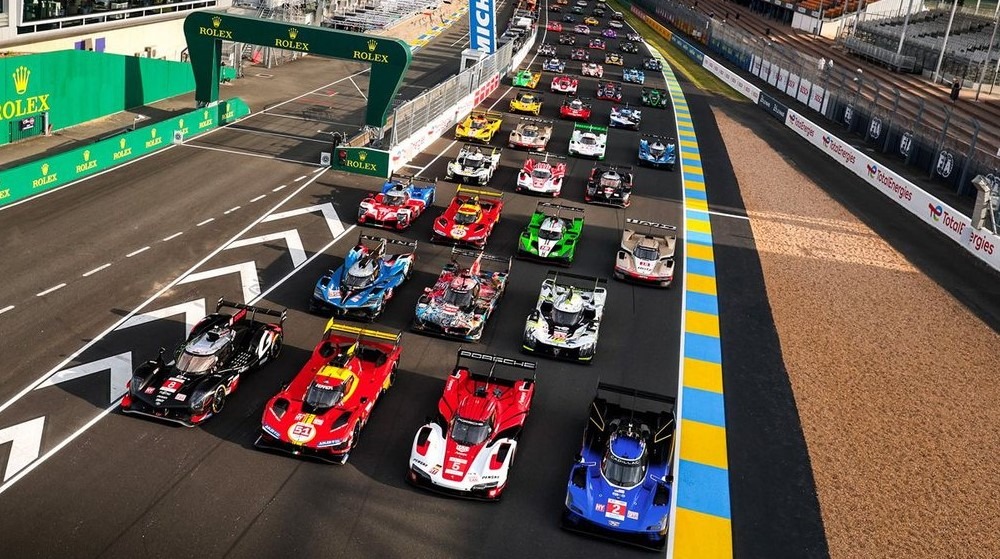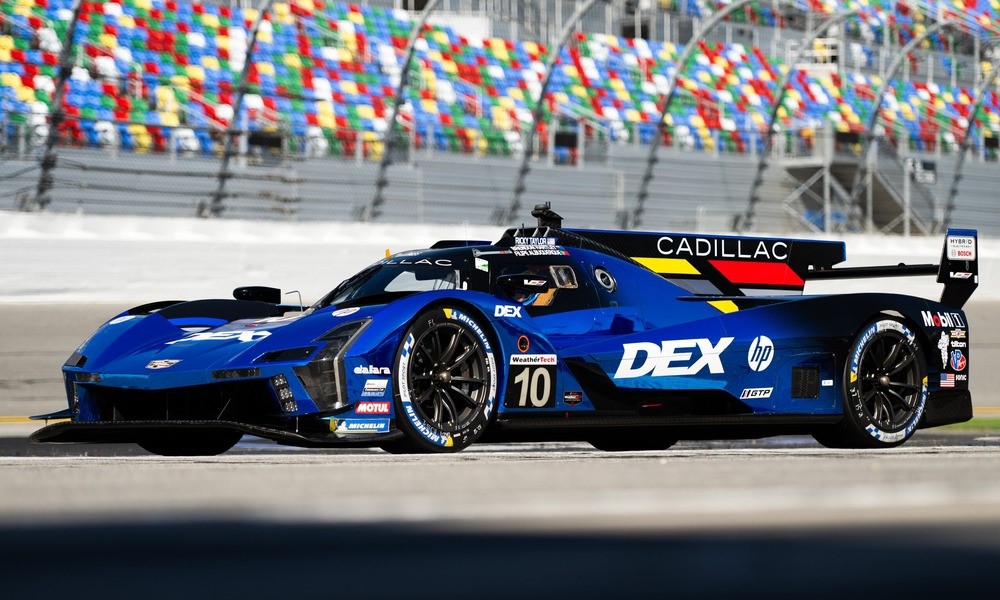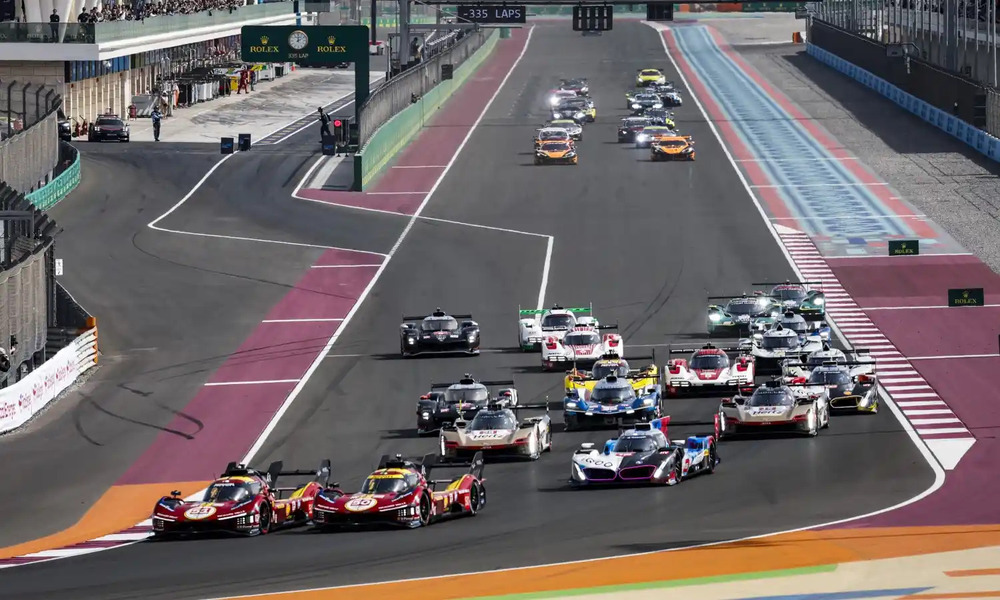WEC’s Le Mans Hypercar regulations have been granted a two-year extension up to the end of 2029.
The FIA World Endurance Championship announced several Hypercar regulations change at the ACO Press Conference this morning, ahead of the 92nd 24 Hours of Le Mans following ratification by the FIA World Motor Sport Council this week.
The main headline concerned the homologation cycle for current Hypercar class cars, which has now been extended until the end of the 2029 season. As part of the regulation extension, two development EVO jokers will be applied to each manufacturer for use in the 2028 and 2029 seasons only. Each OEM has been permitted to use up to five jokers throughout the current cycle.
This ensures the stability of the technical regulations as new manufacturers join the competition each year, according to the organisers and will help them capitalise on the success of the formula in the longer term.
“Stability is very important,” Richard Mille, president of the FIA Endurance Commission said. “It is the reason why we have all these manufacturers in Hypercar, that and the reasonable costs involved.
“We want to avoid obsoleting the cars: we need stability but at the same time flexibility, which is why we have the system of evo jokers so that manufacturers can evolve their cars.”
The extension of the ruleset is expected to be confirmed by IMSA for WeatherTech SportsCar Championship competition as well.
“This is important for the manufacturers involved from a stability point of view, but it also creates opportunities for manufacturers looking at potentially coming into the GTP class,” IMSA boss John Doonan said.
Also confirmed was the so-called ‘two-car’ rule. From the 2025 FIA WEC season onwards each manufacturer represented in the Hypercar category will be required to enter a minimum of two cars. This change has been made, according to the FIA and ACO, “to improve sporting fairness and ensure a level playing field.”
Two-car entries will be mandatory to score points in the FIA Hypercar World Endurance Manufacturers’ Championship, while any additional cars from a given manufacturer will take part in the FIA World Cup for Hypercar Teams, which is currently contested by privately-entered cars.
To accommodate additional entries from manufacturers currently competing with a single car, the maximum grid size has been increased too, from 37 cars this season to 40 for races outside of Le Mans.
BMW M Motorsport director Andreas Roos, whose brand is currently engaged in both the WEC and the WeatherTech Championship with the M Hybrid V8 built to the LMDh ruleset, praised the decision as “the right way” to proceed.
“Still for sure it’s not cheap, but it’s a very cost efficient way to do high level endurance racing,” Roos said.
“We can always talk about where we can still save costs and where we can maybe make [it] more efficient and work on on things. And I clearly have to say and an increase in costs would also be negative for the championship, in my opinion.
“So we have to still really look to be at the end very efficient with the money, how we do it and how we run the championship. So this is clearly a topic, but I think seeing eight, nine manufacturers here and maybe even more in the future shows that this formula clearly works.
“This is why I also say there is no need in the short term future to change anything on this. We all develop the cars to this regulation. The cars are looking fantastic.
“There are opportunities in the regulation when, for example, your design from your road cars completely changes or you have a big update, then you can do a styling update on your car but leave the rest of your car the same. And this for me is a good topic and I support it.”
The current Hypercar regulations came on stream in the WEC in 2021 with a five-year lifecycle, which was extended by two years when the LMDh cars arrived in 2023.
LMP2 regulations extended
Beyond changes to the Hypercar regulations, the next generation LMP2 ruleset has been postponed by two years from 2026 to 2028.
This shift in direction for the category comes amid an ongoing debate behind the scenes between the rule-makers, suppliers and teams about the future shape of the class.
“LMP2 is a key category for ACO. It’s a top category that we must protect. We talked with all the teams and decided to extend the current generation until the end of 2027,” remarked Pierre Fillon at today’s press conference. “We have had lengthy discussions with all stakeholders and will prepare for this new generation.”
The decision to delay comes after the ACO reached out to the current set of ELMS and Asian Le Mans Series teams for opinions on the matter. It has been reported that an overwhelming majority of teams pushed the rule makers for a delay.
Key question marks still remain over the next-gen P2 rules, including the look and specification of the chassis and engine.
“The new chassis and engine have yet to be selected but will be based on two key principles: a downsized engine and reduced weight,” according to the ACO.
“LMP2 is not part of FIA WEC this season or next, but remains the premier class in the European Le Mans Series and Asian Le Mans Series.”
The current cars will be replaced by a new breed in 2028 that will have a downsized engine and will be lighter.
A one-year extension means that the current regulations will have had a 11-year lifecycle. The rules, which demand the use of the one-make 4.2-litre Gibson V8 engine, were introduced ahead of 2017, initially with a four-year span.
There were a series of extensions, the latest of which was confirmed last October when it was announced that Gibson Technologies would continue as the engine provider at a new introduction date for the next-generation of P2 car in 2026.
LMP2 has become a de facto one-make category for the ORECA 07 chassis as rival chassis developed by Dallara, Ligier and Riley/Multimatic proved unable to match its performance.





